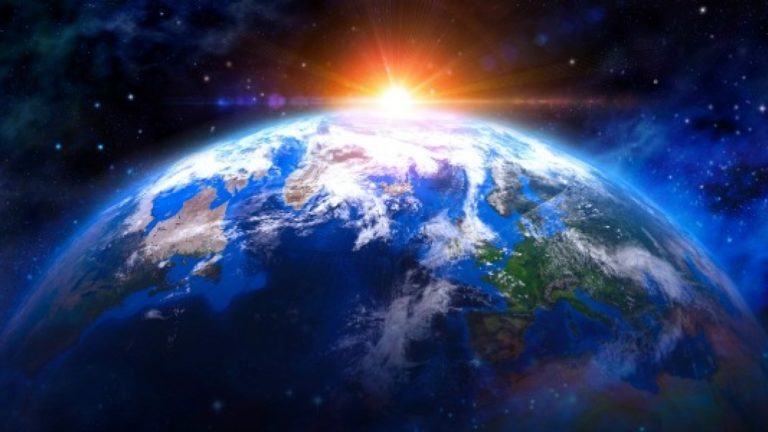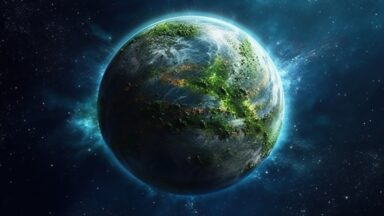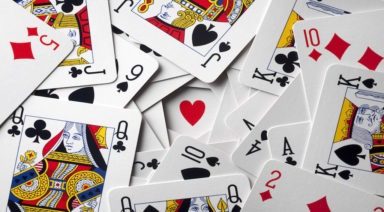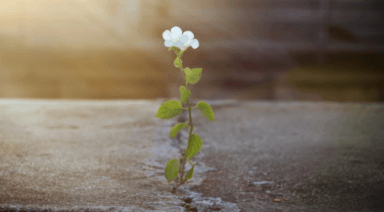Greeting Goddess Gaia

It’s hard to begin a discourse on Gaia without moving into poetry, song and dance. Such is her love for us that I immediately bow in awe for the bounty she offers.
In the time before time
I heard a call from the cosmos
of such illustrious beauty
I succumbed
answering the call of Gaia
to help her seed a new land
where love was all
and yet have I to yearn for the affections of another
Who is Gaia?
Quite simply, Gaia is life. She is all, the very soul of the earth. She is a goddess who, by all accounts, inhabits the planet, offering life and nourishment to all her children.
In the ancient civilizations, she was revered as mother, nurturer and giver of life. It’s she who created and sustained us, and to whom we returned upon death.
She goes by many names, but in an effort to better connect and understand this energy, we’ll explore the myriad of forms in which she appears on Earth.
Ancient Ways and Goddess Traditions
Every culture has their version of the Earth Goddess. The Greeks called her Gaia, while the Incas know her as PachaMama. In some cases, she predates writing: ancient, pre-linguistic references to her have been found, alongside shrines, statues and paintings of her in every corner of the globe. She is the first goddess, the primeval one, the creator of all life and the fullness of her legacy is still being resurrected after patriarchal suppression.
The paleolithic Venus figures dot all of Europe, hearkening a worship of the feminine earth mother which has been lost to us. Despite the efforts of many historians, archaeologists and artists, we’re only now beginning to remember the stories of the goddess.
In any sincere effort to unearth her, we must look to the oldest documented accounts.
Gaia in Greek Mythology
To the Greeks, Gaia was the ultimate goddess of raw, maternal power. In the beginning, there was chaos, nebulous ethers waiting to take form. This primordial landscape awaited direction; it’s then that the spirit of Gaia arrived to give structure to the formless and the Earth was conceived.
She became the Earth, birthing all form of landscape, plant and creature. Though her creation was majestic, her solitude was great. She longed for love and created the sky with whom she mated, igniting a creative force which birthed countless offspring: Time and the Fates, the Muses and the oceans, to name a few. She’s considered the primeval mother of whom all gods—and life itself—descended.
As the prevalence of gods and goddesses in the 19th and 20th centuries faded away, so did history books’ tales of female pharaohs, women scientists and amazon warriors. History is kept by the victors—and the victors are most often men. This left a void in collective consciousness and Gaia was relegated to mythology alone.
With the convergence of feminism in the 1970s, all that changed when a groundbreaking pro-female establishment was founded, providing new understanding of how our planet operates.
The Gaia Theory
In 1970, chemist James Lovelock and his research partner Lynn Margulis (the wife of Carl Sagan at the time) proposed that the earth is a living being, self-regulating the elements to sustain life on it. This revolutionary hypothesis was seen as heretical, but has since been accepted as fact; a theory, no longer a hypothesis.
Their work suggested that in the earth chemicals all “talk” to one another to protect life on the planet; the salt in the ocean is never too salinated, the oxygen in the atmosphere never too noxious, and the temperature of the earth never grows too hostile for life to thrive. All elements work in perfect harmony to ensure life on earth is sustained.
The stability of life and its consistent ability to self-regulate and protect earth’s creatures connotes a universe much more intelligent than previously imagined.
Gaia theory taught that a sophisticatedly aware universe is regulating these many facets to protect and preserve life on the planet, much as a mother protects her own children.
Far beyond a comforting ideology, we can find evidence in spiritual traditions which give heed to the belief of the earth as a loving mother, further nurturing our human relationship with Gaia.
Resurgence of Gaia
A new curiosity about the history and meaning of Gaia has recently been sparked. Men and women have begun to seek to understand this innate consciousness. What they’re finding is far from surprising, as the idea of characterizing the earth energy is present in the wisdom of two of the most enduring native traditions, Chinese medicine and Native American theology.
Chinese Five Element Theory
Among the oldest healing modalities on the planet is Chinese 5 Element theory. Before Mao Tse-Tung instituted a politicized Traditional Chinese Medicine, there existed a theory based not only in physical, but rooted in a spiritual understanding of life. Five Element theory honors the Earth energy as maternal, warm, nurturing and joyous. Abundant in its gifts, earth’s energy is the sound of laughter on a late summer day.
If someone has an unbalanced earth energy, they could fear security, develop eating disorders and may never feel satisfied in life. It’s these qualities of being fulfilled, complete and secure that earth gives us.
Native American Medicine Wheel
Equal in its enduring wisdom, the Native American Medicine Wheel is a way of understanding our world as practiced by every indigenous nation. By working with the directions or elements, we can be in harmony with nature.
On the wheel, the earth lies in the south and is the ruler of bounty, expansive growth, passion, peace and relationships. To work with the earth energies of the south ensures we are in communion with the spirit of abundance, joy and creation.
Both ideologies are based in an understanding of the world as interwoven and infinitely more complex than Western beliefs convey. Though from different parts of the world, both teachings characterize the energy of earth as the same: loving, generous and maternal, a protector of people and the planet.
Enduring Relevance
Far beyond the mythological Gaia, the name has come to represent an all-loving, nurturing and intelligent cosmic force which oversees life on earth. The goddess traditions have worked tirelessly to resurrect the ancient teachings of the Great Mother and ensure her presence as a force of love on the planet.
More than saving the planet or participating in Earth Day celebrations, we can treat everyday like a ceremony. To be in a sincere connected relationship with Gaia, we must acknowledge her sundry gifts and be open to receive her wisdom.
Ways to Be Present With Gaia
In her infinite love, we may forget to acknowledge all the bounty she offers. Here are a few spaces to reconnect, remembering the loving presence of Gaia all around you. To be in ceremony in every moment allows us to rise as co-creators with her now.
Food
See your food as sacred nourishment. This will not only raise your vibration but it will also ensure more mindful presence when you can be aware of where the blessings came from. She not only provides the crops, but also the earth in which they grow.
Shelter
From the wood under your feet to the aluminum siding surrounding you and the tar on the roof overhead, all these materials are grown on or in the earth. Be in awe of her myriad of blessings.
Crystals
Whether or not you’ve been zapped by the crystal bug, you can probably recall seeing a mineral specimen whose beauty moved you. Every jade, amethyst, diamond and shard of obsidian came from Gaia. In her love, she creates the most stunning specimens to support and ease our human existence.
Plants
The magnitude of healing plants is astounding. From fresh flowers, to trees, mushrooms to bark, every culture understands the blessings of the plants to heal human ailments.
Pay attention to the plants around you to hear the messages they may be trying to share. Chicory for example is a common weed that grows freely even in the most impoverished areas of urban landscapes. Chicory is an extender spirit, making coffee go further in times of economic depression. If we could remember to use the natural resources of Gaia, we could eradicate or lessen hunger.
Time in Nature
Dr. Joe Dispenza recently reported: “In clinical studies we have proven that 2 hours of nature sounds a day significantly reduces stress hormones up to 800% and activates 500-600 DNA segments known to be responsible for healing and repairing the body.”
To amp up your healing connections, try earthing.
Respect of Natural Resources
It hopefully goes without saying, but being mindful of recycling and limiting your use of synthetic resources will be a great blessing to honor the preservation of Gaia.
The Great Destroyer
While it’s easy to become infatuated with the beauty of Gaia’s gifts, she’s also the great destroyer. As children, at times we will upset mother—so too is this the case with the Great Mother Gaia. Her generosity can be taken advantage of, her lands raped and people harmed.
Just as we disappoint our human mothers and consequences are dispensed, so too does Gaia balance out the injustices she suffers. Famine, extreme weather, volcanoes and tsunamis are the ways she rights herself and restores balance. While these actions could look punitive, it’s destruction in order to create something better which she must enact. Even in chaos, there is purpose beyond what our human minds can see.
By moving into better alignment with her, these unpredictable forces can be ridden with ease and understanding.
Meditation: Connecting with Gaia
Sitting on the earth would be most ideal for this meditation, but as we are working with her Spirit, find any comfortable sitting position and begin to slow your breath.
Bring your awareness gently into your hips and let all the energies of the day go. Focusing on this pelvic bowl, allow your breath to expand all the way down into your abdomen. Bring anything which causes discomfort or distress there now.
See beneath you the earth, open to greet you, and a red and gold spiral of light begins to glow at your perineum. This light spirals into the earth, ushering you into her most sacred center.
Feel yourself gently drifting to the center of the earth, into her cosmic womb of creation and destruction. You will feel a natural resting place and appreciate the serene calmness around you. Sit in this quiet and be with the calm energy she offers.
If you wish, ask for a figure of Gaia. You may see her as a woman, a goddess, a color or a symbol. Whatever arises is perfect for you now and will offer a meaningful tool to deepen your relationship with her.
When you feel finished, thank her and allow your attention to come back into your body. Open your eyes slowly and celebrate your newfound connection.
Shifting to Honor Gaia
Each time we honor Gaia and all she represents, we honor the love of a living and present universe around us. In these ways, we’re participating in the expansion of a cosmic consciousness.
Your intimate work with her will remind you resolutely that there’s always more than enough and all of your needs are provided for. By being in this awareness, you can see through the illusions and understand the beliefs that are truly damaging our planet. It’s only through shifting our own perceptions that we may link with the consciousness of Gaia to change the earth.
What Does Gaia Mean?

Although the name Gaia has various meanings and interpretations, it is most commonly associated with the Greek goddess who personified Earth in its primordial form. Quite simply, the definition of Gaia is life. She is all, the very personification of the earth. She is the mother goddess, inhabiting the planet, and offering life and nourishment to all her children. In ancient civilizations, she was revered as the mother, nurturer, and giver of life. She goes by many names, including Gaea, Ge, Mother Earth, Terra Mater to the Romans, Magna Mater, and more recently, Mother Nature. Each of these names is a testament to her enduring presence as the life-giver, the ultimate nurturer, and the architect of existence.
Gaia, often pronounced “GUY-uh,” holds the essence of existence within its syllables. This name, steeped in the rich tapestry of ancient Greek mythology, serves as a bridge to the Earth itself, embodying the very spirit of the planet. The etymology of Gaia, or Γαῖα in the original Greek, translates to ‘earth’ or ‘land,’ a fitting homage to her role as the primal Earth Mother. The term has since transcended its mythological roots, evolving into a symbol for the interconnectedness of all life on Earth, particularly within environmental and ecological contexts.
As we delve into the myriad ways she manifests across cultures and epochs, we embark on a journey to deepen our connection with the world around us, exploring the profound legacy of Gaia’s nurturing embrace.
Gaia: The Goddess of Ancient Greek Mythology
Within the pantheon of ancient deities, Gaia’s presence was unparalleled, embodying the very essence of primordial creation and maternal might. Her name, evoking the boundless strength and nurturing spirit of the Earth, was revered across the ancient world. To the Greeks, Gaia was the ultimate goddess of raw, maternal power. In the beginning, there was chaos, nebulous ethers waiting to take form. This primordial landscape awaited direction; it was then that the spirit of Gaia arrived to give structure to the formless and the Earth was conceived.
The Mother of Life and the Divine Heavens
In Greek mythology, Gaia stands as the quintessential embodiment of the Earth itself, revered as the primal Mother Earth goddess. From her fertile womb sprung the very fabric of the cosmos: she gave birth to Uranus, the sky, who would become both her husband and her equal; Pontus, the ancient, unfathomable sea; and the towering Titans, precursors to the Olympians. Among her offspring were the Titans – Cronus and Oceanus, the Cyclops with their single, piercing gaze, and the hundred-handed giants, each embodying forces of nature and the universe’s nascent power.
Her influence extended beyond mere creation. Gaia’s union with Uranus spawned the first pantheon of Greek deities, setting the stage for the saga of the gods and goddesses that would dominate Greek myth. Yet, it was through her guidance that Zeus, her grandson, ascended to become the chief among the Olympian gods. Her wisdom and might were echoed in the tales of her descendants, including Athena, the Greek goddess of wisdom, born of Zeus’s head, further cementing her legacy within the mythological hierarchy. Gaia’s story, interwoven with the elements of creation, celestial phenomena, and divine lineage, marks her as a central figure in the tapestry of Greek mythology and the subsequent origin of Olympus, embodying the Earth’s life-giving force and maternal strength.
The Paleolithic Venus: Rediscovering the Earth Mother
The Paleolithic Venus figurines, scattered across Europe, are emblematic of ancient societies’ reverence for the feminine Earth Mother—a veneration somewhat obscured by the passage of time. These figurines, often robust and gravid, symbolize fertility, motherhood, and the generative powers of nature itself. They serve as silent yet eloquent testimonials to a time when the worship of the Earth’s nurturing essence was widespread, deeply ingrained in the fabric of everyday life.
Modern excavations and scholarly endeavors have begun to peel back the layers of history, revealing a complex tapestry of belief systems that placed the Earth Mother at their core. Through the meticulous study of these artifacts, historians, archaeologists, and artists are gradually reconstructing the narratives of these ancient peoples. This resurgence of interest not only honors the goddess’s legacy but also rekindles a connection to our collective past, where the Earth was revered as the ultimate source of all life and sustenance.
A Return to Divine Feminine: Gaia’s Resurgence in Modern Consciousness
As the prevalence of gods and goddesses in the 19th and 20th centuries faded away, so did history books’ tales of female pharaohs, women scientists, and Amazon warriors. History is kept by the victors—and the victors are most often men. This left a void in the collective consciousness and Gaia was relegated to mythology alone. With the convergence of feminism in the 1970s, all that changed when a groundbreaking pro-female establishment was founded, providing a new understanding of how our planet operates.
In the wake of the 20th century, Gaia’s image was revitalized by the fusion of feminism and environmentalism. This revival spotlighted the divine feminine, with Gaia symbolizing strength, nurturing, and interconnectivity. Feminism’s quest to amplify silenced voices paralleled environmentalism’s rise, especially after “Silent Spring,” casting Gaia as an emblem of ecological awareness and unity. This modern embrace of Gaia has galvanized a collective push towards environmental respect and sustainability, intertwining spiritual reverence with activism for a balanced, thriving planet.
The Gaia Hypothesis: Earth as a Self-Regulating Living System
In 1970, chemist James Lovelock and his research partner, biologist Lynn Margulis introduced the Gaia Hypothesis, positing Earth as a self-regulating, living being capable of maintaining the conditions necessary for life. Initially met with skepticism, the hypothesis challenged the prevailing view of Earth as a passive backdrop to life, proposing instead that life actively participates in shaping the planet’s environment. This idea of Earth as a cohesive system, where biological processes interact with physical and chemical ones to maintain life-sustaining conditions, was revolutionary. The scientific community’s initial resistance stemmed from the hypothesis’s implication that Earth’s biosphere functions almost like a single organism, a concept that seemed to blur the lines between life and non-life.
Gaia Theory: Understanding Earth’s Intelligent Systems
Building on their hypothesis, Lovelock and Margulis’s work revealed how Earth’s myriad components—its atmosphere, biosphere, geology, and oceans—integrate to form a complex, self-regulating system. This system, guided by the interactions between living organisms and their environment, adjusts and responds to changes in a way that sustains life. For example, the regulation of Earth’s atmosphere by photosynthetic organisms, which convert carbon dioxide into oxygen, demonstrates this symbiotic relationship. Such mechanisms underscore the planet’s capacity for self-regulation and balance, evidencing a level of systemic intelligence previously underestimated.
Gaia theory has since evolved from a controversial hypothesis to a foundational concept in Earth system science, inspiring further research into how Earth’s life-supporting systems operate. It has underscored the importance of viewing the planet as an integrated whole, where each component plays a critical role in maintaining the conditions for life. This holistic perspective has significant implications for environmental conservation, highlighting the delicate interdependencies that sustain the Earth and the impact of human activities on its ability to regulate itself.
The Spiritual Meaning of Gaia in Practice
Far beyond the mythological Gaia, the name has come to represent an all-loving, nurturing, and intelligent cosmic force that oversees life on Earth. The revival of goddess traditions has been instrumental in reintroducing the ancient wisdom of the Great Mother, affirming her role as a beacon of love and sustenance. Yet, engaging with Gaia’s legacy demands more than occasional environmental activism or annual Earth Day observances. It calls for a daily commitment to living in harmony with our planet, treating each interaction as a sacred opportunity to honor and preserve the intricate web of life Gaia sustains.
To foster a truly connected relationship with Gaia means to actively participate in the stewardship of Earth, recognizing and respecting the bounty she provides. This involves making conscious choices that reflect our understanding of the interconnectedness of all life forms and the impact of our actions on the planet’s health. By adopting sustainable practices, advocating for environmental protection, and cultivating a sense of reverence for the natural world, we can contribute to a future where both humanity and the Earth flourish. In doing so, we not only pay homage to Gaia’s enduring spirit but also embrace our role as caretakers of the beautiful, dynamic planet she embodies.





































